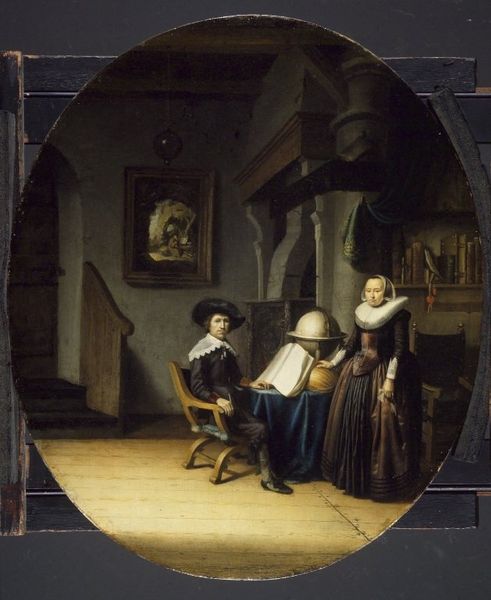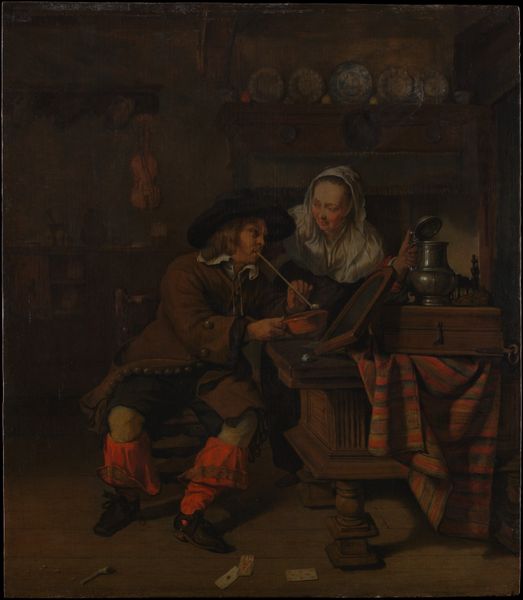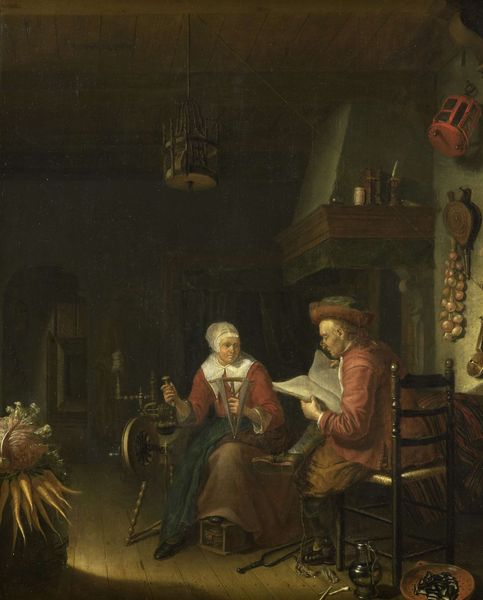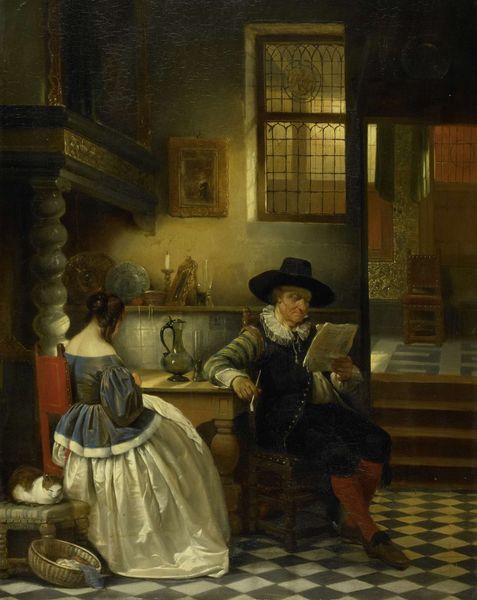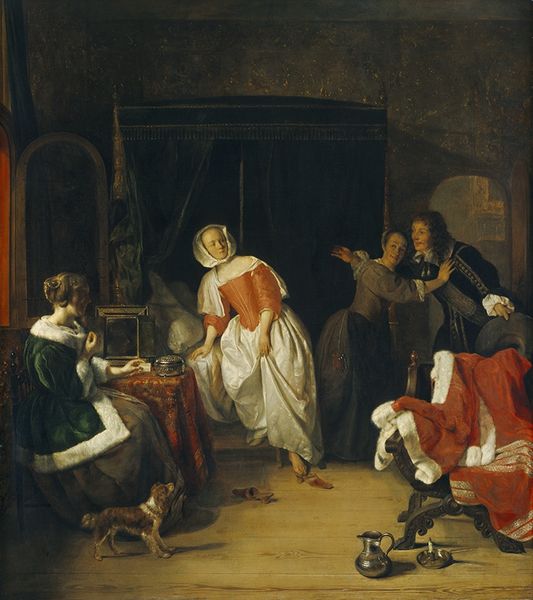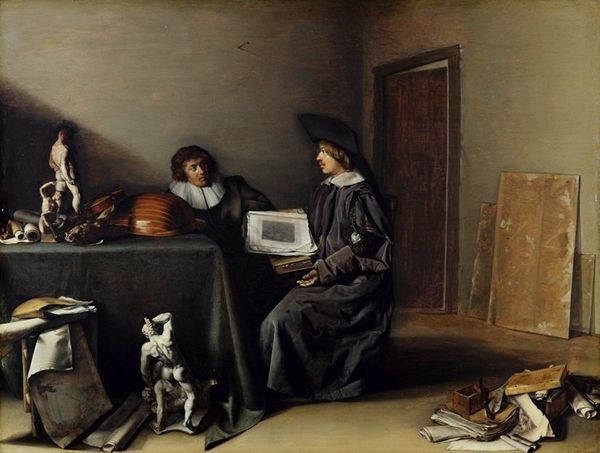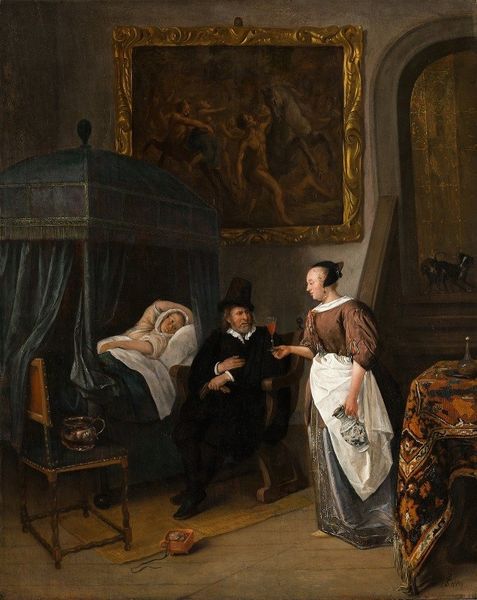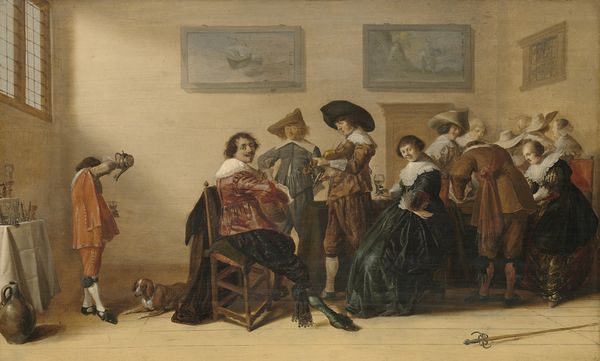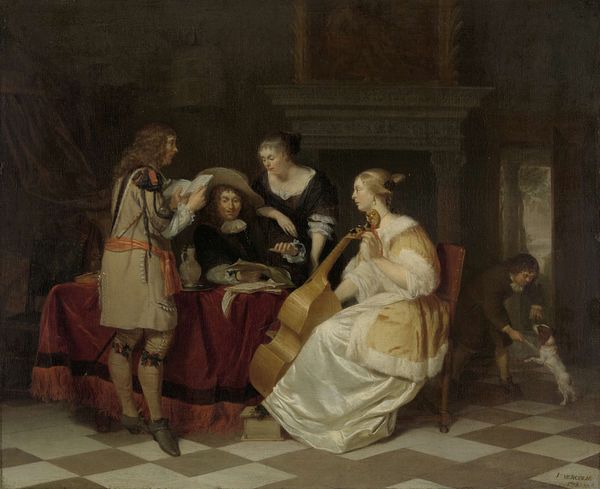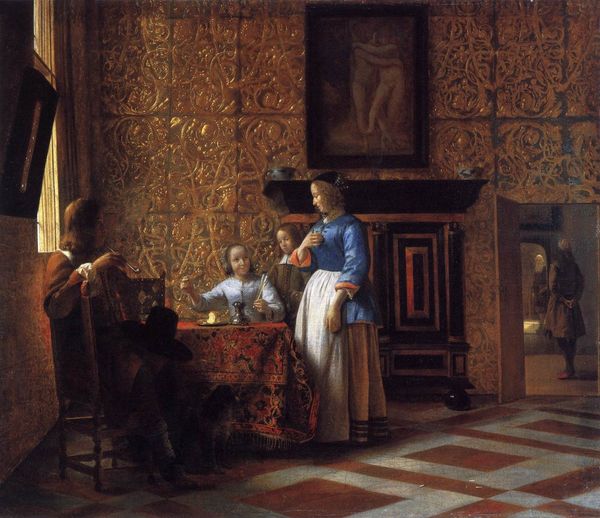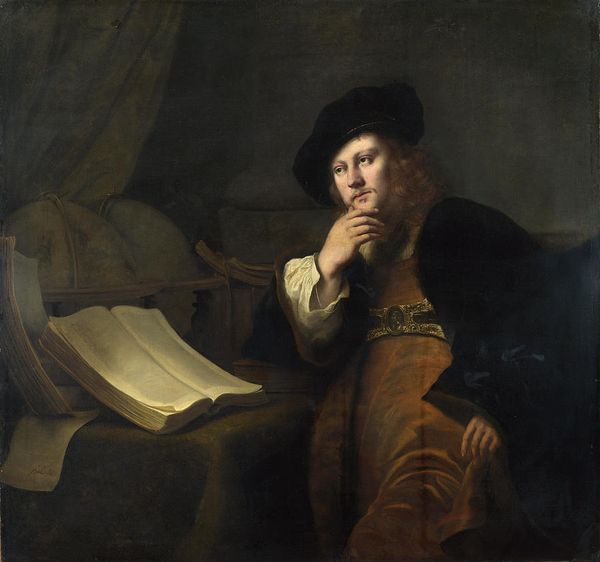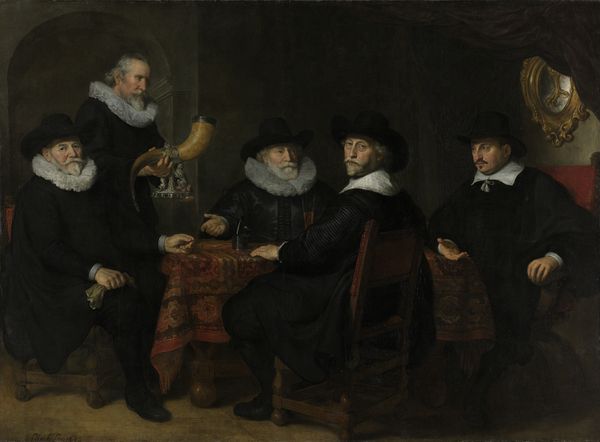
painting, oil-paint
#
portrait
#
dutch-golden-age
#
painting
#
oil-paint
#
oil painting
#
group-portraits
#
genre-painting
#
history-painting
#
realism
Dimensions: height 83.5 cm, width 93 cm
Copyright: Rijks Museum: Open Domain
Editor: Here we have Johannes Stroebel’s "The Woollen Cloth Inspectors of the Leiden Cloth Hall" from 1866. It's an oil painting portraying what appears to be a serious transaction. What strikes me is how much it focuses on labor – all this paperwork and careful scrutiny! What stands out to you when you look at this piece? Curator: It's intriguing to consider this 1866 painting as more than just a representation. What interests me are the implied economic relationships evident through the production and trade of textiles, even in painted form. This image itself becomes a commodity representing and almost celebrating the systems in place. Consider the role of the "saaihal," where cloth was inspected; what do you think the means of production was at this time? Editor: Hmm, manual labor, looms perhaps? The kind you’d find in a guild setting? Curator: Exactly! It's essential to analyze the historical context – the social status afforded to cloth merchants, the economic impact of the textile trade on Leiden. Do you see this reflected in how Stroebel emphasizes their clothing, tools, and the very fabric they're inspecting? Think about what that textile represents: the culmination of labor from numerous individuals in the process, as well as how the canvas of this piece similarly shows the results of artistic labor to reflect commerce. Editor: So, by depicting them with such seriousness, almost reverence, he’s not just capturing their likeness, but legitimizing their economic role within society? This is interesting and gives the picture much more depth, from brushstroke to society itself. Curator: Precisely. The painting almost acts as an advertisement for this industrial system. Consider what painting materials— pigments, oil, canvas—represented in terms of craft, global trade, and value, and consider that value as it mirrors these men inspecting Leiden cloth. These details transform a portrait into a commentary on labor, materials, and market dynamics. Editor: That is really interesting! Now I see it isn't just about these individuals, it's a complex document of its time. Thanks for that enlightening view. Curator: It highlights how art captures not just the 'what,' but the 'how' and 'why' of production and its effects on people.
Comments
No comments
Be the first to comment and join the conversation on the ultimate creative platform.
